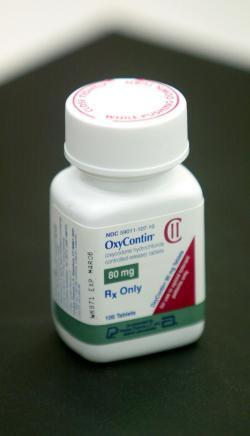When Purdue Pharma announced that it would begin studying the safety of painkiller OxyContin in children aged 6-16, cynics noted that the study qualifies Purdue for a six-month extension of its patent, which could be worth an extra $1.4 billion in sales. Sure, Purdue’s motives may be self-interested, but its decision—whatever the reasons for it—is a sign that a law to encourage companies to test drugs on children is working. (The law has been in effect since 1997, but according to a 2011 FDA document, more drugs were tested on children in the past five years than in the 30 years before that.)
Most medications are not specifically tested on children. Children suffer from many of the same ailments as adults, but drugs may affect them differently. Which is why, in an ideal world, all medication that might be used on children would be tested on pediatric patients. Otherwise, pediatricians have to extrapolate from adult data, which can be risky.
Drug tests on children are difficult and expensive, and so drug companies tend to skip them, unless there’s a big pediatric market. So, the FDA came up with a way to entice companies to do the right thing: In exchange for doing the studies, the FDA grants the company an extra six months of patent protection on all formulations of the product. And Purdue took the bait.
Good. Though it’s rare, OxyContin is already being prescribed to children. (Less than 1 percent of OxyContin ‘scripts were written for kids last year.) The kids in Purdue’s study suffer from painful conditions ranging from severe burns to cancer and sickle cell anemia. Only kids who need round-the-clock pain relief are eligible. If they weren’t taking OxyContin, they’d probably be on morphine or another narcotic painkiller.
“It looks to me like a raw, crass, last-gasp exploitation of a drug that has been synonymous with misuse, abuse and harm to patients,” ethicist Dr. Arthur Caplan told the New York Times, regarding Perdue’s decision to do pediatric tests.
Caplan is referring to the fact that OxyContin is a popular street drug—but that’s a red herring. It’s also a very effective painkiller. Contrary to popular belief, patients who are prescribed opiate drugs for pain are unlikely to become addicted. Less than 1 percent of pain patients over 30 with no history of substance abuse get hooked on narcotics. Those who do succumb tend to have a history of substance abuse. If anything, we’d expect 6-year-olds to be at even lower risk of addiction than adults because the playground set is less likely to have pre-existing substance abuse issues—and their medication is more likely to be doled out and controlled by a parent.
The New York Times argues that not enough is known about the long-term effects of OxyContin in adults and frets that opiates might have developmental effects on children. These are legitimate concerns, but that’s an argument for more research, not less.
